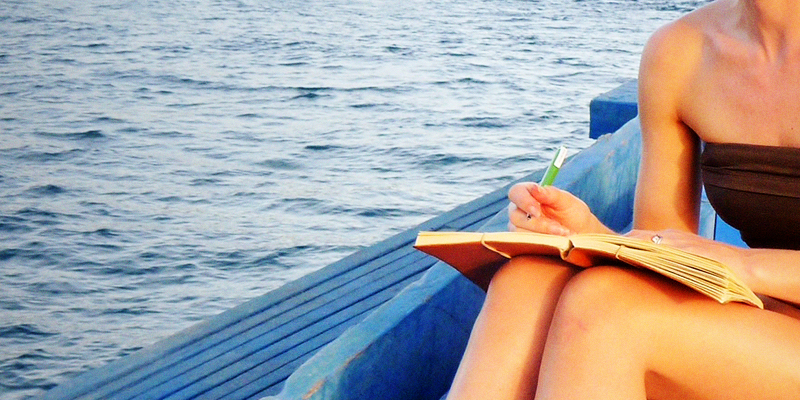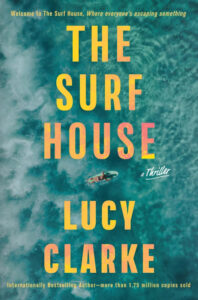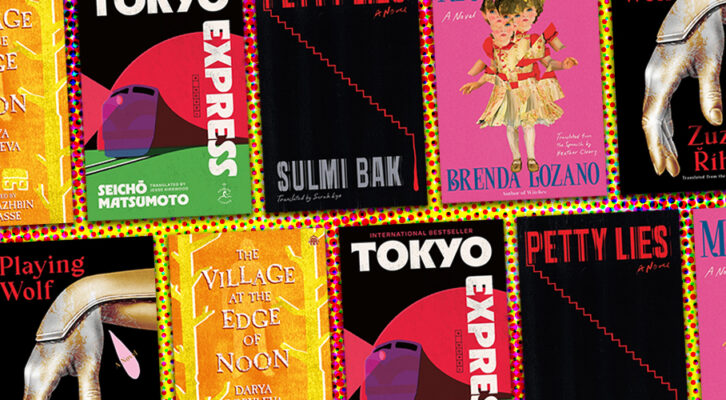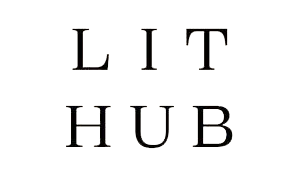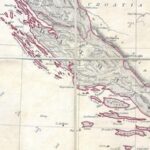If you’ve read any of my destination thrillers, then we’ll have been on a few adventures together. We may have backpacked in Bali (Swimming At Night), stayed in a beach shack in Tasmania (A Single Breath), sailed around the Philippines (No Escape), summered in a beach hut (Last Seen), been stranded on a Fijian island (The Castaways), rented a Greek villa (One of the Girls), climbed a mountain in Norway (The Hike), and caught waves in Morocco (The Surf House).
Have I done all these things in the name of research? Absolutely. It is my favorite part of the job! Many brilliant writers create rich worlds without ever leaving their desks, using the internet as their research tool of choice. But for me, a research trip is where my book begins to truly come to life. Storylines crystalize, characters deepen, and fresh, unexpected ideas arise.
Here are eight things I’ve learned along the way about how to make the most of a research trip.
1. Get the timing right. When is the best time to go? Before you start work on your story? At the end when you can factcheck the details you’ve written? For me, the perfect time is once I’ve planned my idea—but before I’m too deep into my first draft. That’s because so much can change during a research trip and I like to leave room for the story to reflect that. Allow your original idea to meld a little beneath the heat of your experiences.
2. Create a wish list. On a research trip I want to immerse myself into a place, soak in the flavors, absorb the atmosphere, and be curious about how somewhere feels. But I also arrive with a clear list of questions that need answering. What does the inside of the village mosque look like? What bait do locals use to catch flathead? Do Moroccan police officers carry guns? Without a specified list, you can return home and have forgotten your critical things.
3. Keep it focused. My third novel, No Escape, was set on a sailing boat in the Philippines. It was an ambitious setting seeing as I’d never sailed before or been to the Philippines. So, in the middle of the British winter, I set about learning to sail, taking an RYA course which saw me sailing overnight in huge, rolling swells. The next step was heading to the Philippines, where I travelled for six weeks, befriending sailors and travelling between islands aboard their yachts. It was a wonderful, heady time, which I wouldn’t change for the world – but I did spend half of my advance on the adventure! Now, with ten years writing experience under my belt and the same number of research trips, I plan my trips more carefully and keep them focused.
4. Talk to people. I tend to be happiest as an observer, head down, scribbling away in my notebook, but of course my perception of a place is just that—mine. When I step outside of my comfort zone and talk to the people living in the places I visit, I learn so much more. How do they feel about the place they call home? What brought them there? How has it changed?
5. Voice-memos are your friend. When I was in Morocco researching The Surf House, I remember hiking through the spectacular shifting sand dunes that back onto the Atlantic. The wind was up, sheeting sand at my bare legs (tip: wear trousers in the dunes!). There wasn’t a place to sit and take out my travel journal, so my trusty voice-memo app meant I could still capture everything as it was unfolding.
6. Recreate it at home. A research trip may only last a few days – whereas writing the book takes so much longer. To keep the setting fresh in my mind, I always create a mood-board for my office wall, by simply taking a pinboard and filling it with photos, maps, sketches or memorabilia that capture the atmosphere of my book. These are used a lot in film and TV as reference points to check the visual tone of the piece. They are so useful when, six months down the line, you’re writing a scene where a character walks through a Filipino market and there on your wall is the exact image of what they may find.
7. Make it tax deductible. Keep receipts, folks! Every country has its own tax rules, but in the UK, your research trip is tax deductible if the trip is wholly and exclusively for business purposes, and you can keep evidence to support this.
8. Remember, it’s fiction. Your aim is to entertain readers, not provide a travel guide. Readers don’t want to get bogged down in the detail of how many kilometres it is between specific places, or whether that taverna on the harbour served calamari or saganaki. So in many of my books, I fictionalise the name of the village or town where the main action takes place, which allows me some artistic license. This isn’t a short cut for lazy researching – it’s about having freedom to make the story work in the best way for your characters.
***

